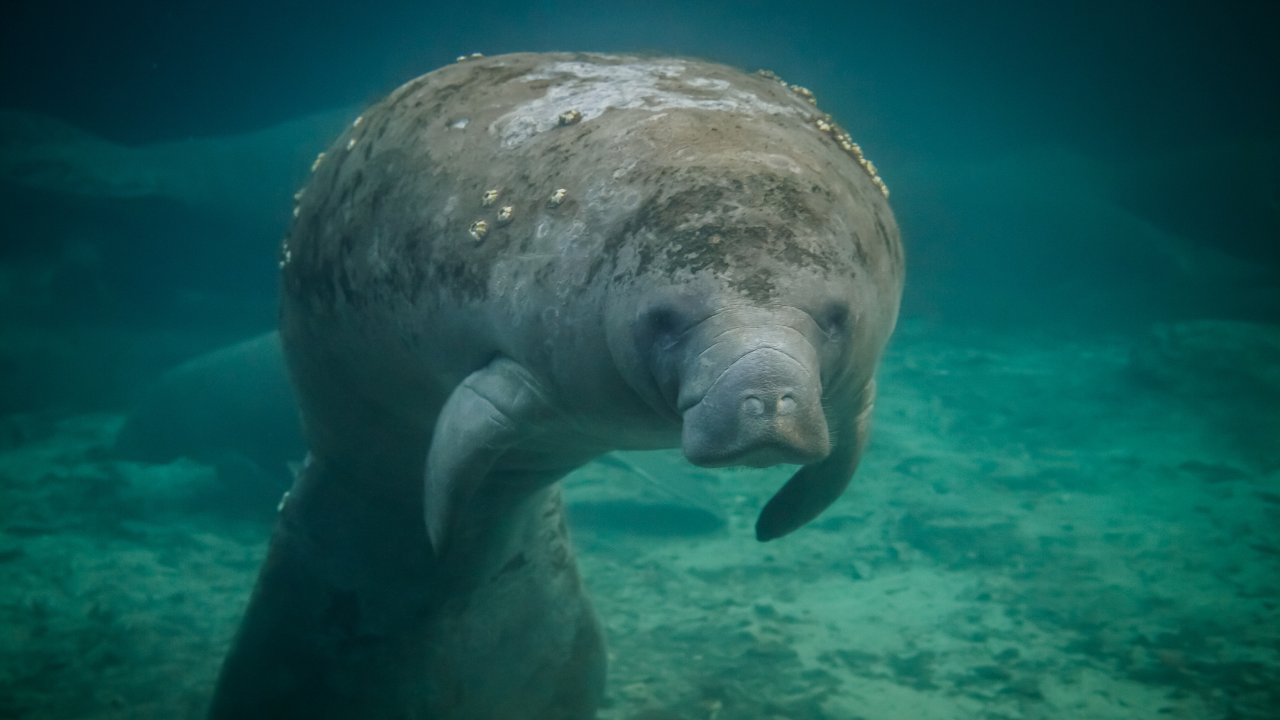CAPE CORAL, Fla. — It has been a rough start to the year when it comes to manatee deaths. So far this year, Lee County has seen 59 deaths recorded by Florida Fish and Wildlife Conservation Commission (FWC). That is a 126% increase over the first three months of 2022.
“A lot of times people are saying ‘what is the one thing that killed this animal,’ said Florida Gulf Coast University Water School Professor Dr. James Douglass. “And a lot of times its not one thing it's the cumulative effect of multiple stressors.”
Dr. Douglass is a marine scientist specializing in coastal marine habitats. He says that our beloved manatees have been hit hard by the red tide we have been experiencing the last few months.
“The manatees are in the water all the time and taking breathes near the surface, so they can get exposed to it a lot by breathing,” said Dr. Douglass.
And if breathing red tide toxins wasn’t enough, manatees also can ingest them through their food.
“Red tide cells can accumulate on the blades of the sea grass, so it is kind of like poisonous salad dressing on their food,” said Dr. Douglass.
According to FWC, at least 20 manatee deaths from St. Petersburg to Marco Island are suspected to be from red tide.
So far in 2023, Southwest Florida has seen 83 manatee deaths. 59 in Lee County, 12 in Charlotte County, 9 in Collier County, and 3 in Glades County.
Statewide, Florida has seen 215 deaths thus far in 2023. If the current pace continues, we will likely be close to 2022 mortality of 800 deaths, but less than 2021’s record-setting 11 hundred deaths.
A lot of those statewide deaths in recent years have been from the loss of seagrass on Florida’s east coast. Dr. Douglass says we are also starting to see that in Lee County.
“Their food is sea grasses and we have seen sea grasses decline in Lee County. So, the deaths that we are seeing now are certainly influenced by red tide, but we might also be seeing some pure starvation happening.”
FWC is currently wrapping up the second year of a pilot program designed to reduce starvation, giving out nearly 400,000 pounds of lettuce this past winter in the Indian River Lagoon.
Dr. Douglass says he would be in favor of a feeding program here in emergency situations but would rather see us address the root cause.
“Just protecting them from motorboats is not enough. We need to also solve the pollution problems that are killing them.”
In recent weeks, several manatees in Southwest Florida were found sick or injured, including one near Pine Island ill from red tide and another lethargic and unresponsive in Bonita Springs. Both were taken to SeaWorld to be rehabbed. SeaWorld Orlando told Fox 4 Friday that they are currently rehabbing 33 manatees from across the state.





